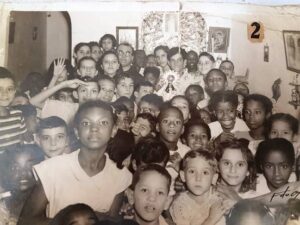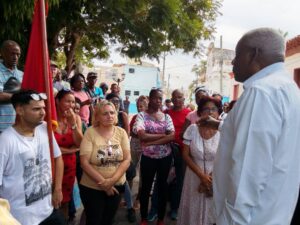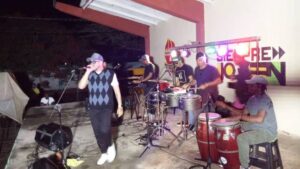That son of slaves conquered a venerable place on the altar of the homeland (+infographic and audio).
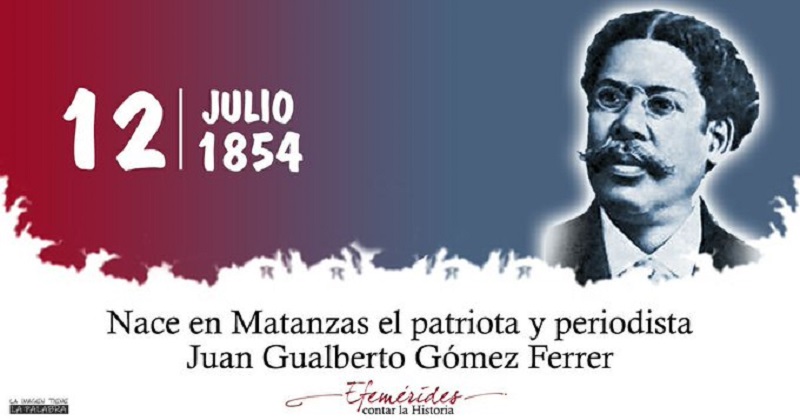
She passed away on March 5th, 1933, at the age of eighty years old. That son of slaves had conquered a venerable place in the altar of the homeland.

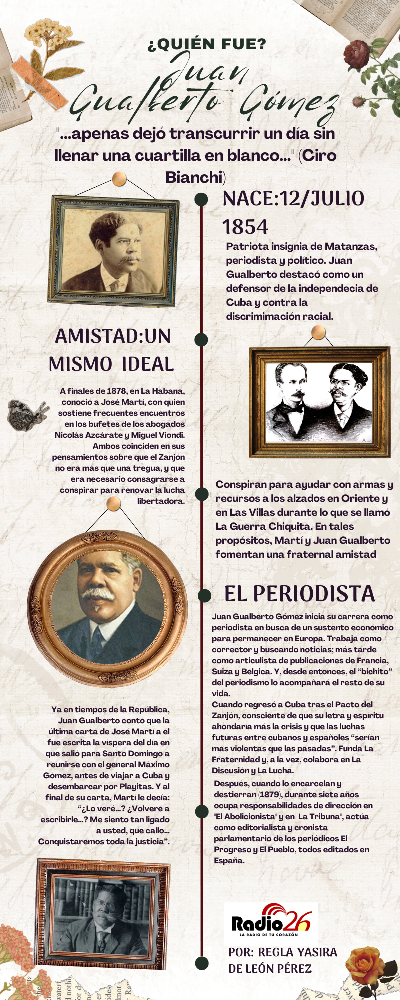
She says that when she was a little girl, I used to make her read all the banners we would find on the road.
-Mom, who is that man?
-He is Juan Gualberto Gómez, a distinguished patriot of our province.
Sometimes I wonder what it was that attracted me so much to that man with the interesting look and although I still do not know, I like to think that it was the same thing that led me to choose journalism as a profession and today makes me write these letters.
Juan Gualberto Gómez was born in the Vellocino de Oro sugar mill, owned by Catalina Gómez. His parents, Fermín Gómez and Serafina Ferrer were slaves, but managed to buy the child’s freedom before his birth, according to the law of the time. His status as a free man allowed him to become literate.
Because of his remarkable intelligence and easy learning, despite the economic sacrifice it meant for them, his parents sent him to study in Havana, at the Nuestra Señora de los Desamparados School, directed by Antonio Medina y Céspedes, an Afro-American teacher inspired by the work of José de la Luz y Caballero.
When the Ten Years’ War broke out, the climate of violence that was beginning to prevail on the island made Juan Gualberto’s parents, with the economic support of Catalina Gómez, send him to France to study the trade of carriage builder, one of the few that Afro-Americans and mestizos could aspire to during the colonial period.
In Paris, Juan Gualberto’s political work began when he was hired as a translator by Manuel de Quesada and Francisco Vicente Aguilera, who were in the country to raise funds for the independence fighters in Cuba. And since then, the young man’s efforts to see his homeland free did not cease.
Journalism came as a form of economic sustenance to Juan Gualberto’s life and from that time until his death, as Ciro Bianchi said, he hardly let a day go by without filling a blank page. He worked as a proofreader and reporter; later as an article writer for publications in France, Switzerland and Belgium.
When he returned to Cuba after the Zanjón Pact, aware that its letter and spirit would deepen the crisis and that future struggles between Cubans and Spaniards «would be more violent than the past», he founded La Fraternidad and, at the same time, collaborated with La Discusión and La Lucha.
When he was imprisoned and banished in 1879, for seven years he held managerial responsibilities in El Abolicionista and La Tribuna, acted as editorialist and parliamentary chronicler of the newspapers El Progreso and El Pueblo, all published in Spain.
He died on March 5th, 1933, at the age of eighty. That son of slaves had conquered a venerable place on the altar of the homeland. And today he is the inspiration of this young journalist who already admired him without even knowing how to read and write.
…ONLINE AUDIO.
Written by Regla Yasira de León Pérez.


